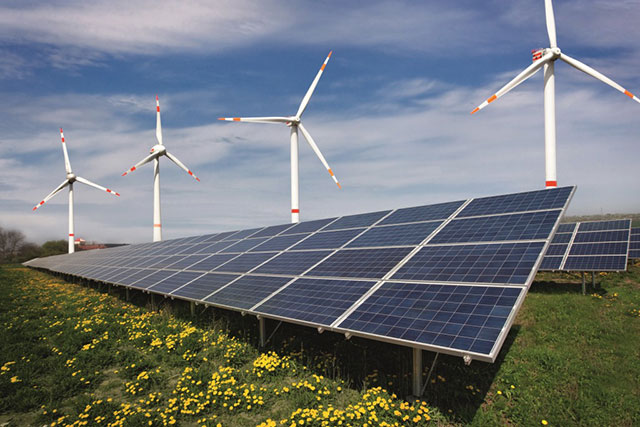India’s wind power target of 60 GW by 2022 is easily attainable but solar target of 100 MW requires cost-effective support to be met, says a study report.
Climate Policy Initiative (CPI), an organization specializing in analysis of issues pertaining to energy and land use policies, and Indian School of Business (ISB), a Hyderabad-based private business school, have jointly carried out the study.
The report — ‘Reaching India’s renewable energy targets cost-effectively’ — suggests certain key measures the government should adopt to get renewable energy, primarily solar energy, projects to generate power at competitive prices.
According to the CPI report, wind power in India is already cheaper than power from newly built plants dependent on imported coal.
Electricity generated by wind farms costs Rs 5.87/kWh, whereas power from imported coal-dependent power plants comes at Rs 6.81/kWh.
And India will have to depend progressively more on the import of coal as its domestic coal resources are limited.
Given the circumstances, the analysis says, wind power will continue to remain competitive beyond 2022.
The report underlines the need to encourage rapid deployment of wind power through policy measures that address barriers such as delays in land acquisition and environmental clearances.
With reference to solar power, the CPI report says solar power prices can become competitive with imported coal-generated electricity by 2019.
However, to accelerate the growth of solar power projects to meet Budget 2015 revised goal of 100 GW (it was 20 GW earlier) the government will have to provide more financial support, the report says.
CPI says India can cut costs on incentivizing solar energy projects in the form of subsidies and such other sops by up to 96 percent by instead offering reduced cost, extended tenor debt.
In figures that translates into reducing the cost of support from Rs2.71 per watt to Rs0.1 per watt.
CPI has pointed out that this gives the government the advantage of recovering the cost of support over time through loan repayments.
The capital thus generated can, in turn, be used to fund other projects.
Gireesh Shrimali, CPI fellow and lead author of the study, says that with its limited budget “it’s important that the government of India takes the most cost-effective policy path” to meet the ambitious targets for renewable energy.
“Wind presents a clear win-win. Adjusting current policy to more deploy solar power projects more effectively would also help lower costs,” Shrimali added.
Ajith Kumar S
editor@greentechlead.com

